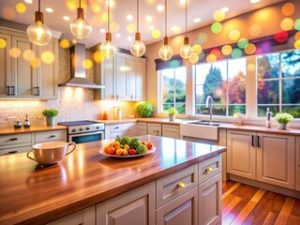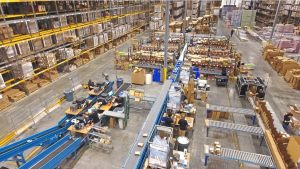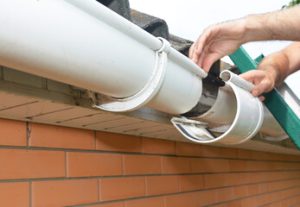Selecting an assisted living facility for yourself or a loved one is one of the most important decisions a family can make. Assisted living offers seniors a supportive environment that balances independence with access to professional care, but the options can be overwhelming. From evaluating levels of care to considering lifestyle and cost, choosing the right facility requires careful research, thoughtful planning, and a clear understanding of personal needs and priorities. A well-chosen Assisted Living Goose Creek SC place can improve quality of life, provide peace of mind, and ensure safety and comfort for years to come.

The first step in choosing an assisted living facility is understanding the type of care required. Assisted living is ideal for seniors who need help with daily activities such as bathing, dressing, medication management, and meal preparation but do not require full-time nursing care. Some facilities also offer specialized memory care programs for residents with Alzheimer’s or other forms of dementia. Identifying the level of care needed is essential because it determines the type of facility, staff qualifications, and available services. Properly assessing needs ensures that the senior receives appropriate support without unnecessary limitations on independence.
Location is another critical factor to consider. Proximity to family, friends, healthcare providers, and community resources can significantly affect a resident’s quality of life. Being near loved ones allows for frequent visits, which can help prevent feelings of isolation and provide emotional support. At the same time, the neighborhood’s safety, accessibility, and availability of amenities like parks, shopping centers, or recreational areas should be taken into account. A well-located facility supports both practical convenience and social engagement, contributing to overall well-being.
When evaluating potential assisted living facilities, it is important to consider the available services and amenities. While core services such as personal care, medication management, and meal preparation are standard, additional amenities can greatly enhance the resident’s experience. These may include fitness programs, social and recreational activities, transportation, housekeeping, laundry services, and specialized wellness programs. Facilities that offer a broad range of services allow residents to maintain independence while engaging in activities that promote physical, mental, and emotional health.
Staff qualifications and resident-to-staff ratios are critical factors in determining the quality of care. Adequate staffing ensures that residents receive timely assistance and personalized attention. Staff should be trained in senior care, emergency response, and specialized areas such as dementia care if needed. Meeting and observing staff interactions with residents during visits can provide insight into the facility’s culture and level of attentiveness. Professionalism, compassion, and responsiveness are key indicators of a facility’s commitment to high-quality care.
Understanding the facility’s policies and procedures is also crucial. This includes reviewing admission requirements, care plans, emergency protocols, and policies on medication administration, visitor access, and resident rights. Facilities should be transparent about fees, additional costs, and contract terms. A clear understanding of policies ensures that families know what to expect and reduces the likelihood of misunderstandings or unexpected charges.
Key Considerations for Choosing an Assisted Living Facility
- Level of Care – Evaluate whether the facility assists with daily living activities, medication management, and specialized memory care if needed.
- Location and Accessibility – Consider proximity to family, healthcare providers, shopping, and recreational areas.
- Staff Qualifications and Ratios – Ensure staff are well-trained, compassionate, and sufficient in number to provide timely support.
- Services and Amenities – Look for facilities offering meals, housekeeping, transportation, wellness programs, and social activities.
- Safety Features – Verify that the facility has emergency response systems, secure entrances, non-slip flooring, and fall prevention measures.
- Social and Recreational Opportunities – Assess programs for engagement, community building, and mental stimulation.
- Policies and Procedures – Understand contracts, fees, resident rights, and care protocols.
- Environment and Culture – Observe cleanliness, friendliness, and how staff interact with residents to ensure a positive atmosphere.
Another important aspect of choosing an assisted living facility is the cost and payment options. Assisted living can vary widely in price depending on the location, level of care, amenities, and size of the living space. Some facilities charge a flat monthly rate, while others itemize services. Understanding what is included in the cost and any additional fees for services such as transportation, therapy, or specialized care is essential. Families should also explore financial assistance programs, insurance coverage, or veteran benefits that may help offset costs.
Visiting multiple facilities in person is highly recommended. Touring the facility allows families and seniors to assess the environment firsthand, ask questions, and interact with staff and residents. Observing daily routines, cleanliness, and social interactions can provide valuable insights into the quality of life and overall satisfaction of current residents. Virtual tours can be helpful as a preliminary step, but in-person visits remain the most effective way to make an informed decision.
Resident feedback and reviews offer another valuable source of information. Speaking with current or former residents and their families can provide a realistic view of what daily life is like in the facility. Pay attention to comments about staff responsiveness, quality of meals, cleanliness, activities, and overall satisfaction. While individual experiences may vary, patterns in feedback can help identify strengths and potential issues.
The facility’s approach to health and wellness is also important. A strong wellness program may include fitness classes, physical therapy, mental health support, nutritional guidance, and preventive care. Encouraging physical activity, mental stimulation, and social interaction helps residents maintain health, independence, and quality of life. Facilities that promote holistic wellness show a commitment to the overall well-being of their residents, not just basic care.
Steps to Choosing the Right Assisted Living Facility
- Assess Needs – Determine the level of assistance required for daily activities, medical care, and memory support.
- Research Options – Compile a list of facilities that match care needs, location preferences, and budget.
- Visit Facilities – Tour multiple locations, observe daily routines, and speak with staff and residents.
- Compare Costs and Services – Evaluate pricing structures, included amenities, and additional service fees.
- Review Policies and Contracts – Understand admission requirements, care plans, resident rights, and payment terms.
- Check References and Reviews – Gather feedback from current residents and their families.
- Evaluate Environment and Culture – Ensure a clean, safe, welcoming, and socially engaging atmosphere.
- Make a Decision and Plan Transition – Choose the facility that best meets needs and coordinate a smooth move-in process.
Assisted living is not just about care; it is also about creating a community that fosters independence, engagement, and dignity. Facilities that encourage socialization, offer recreational activities, and provide opportunities for residents to pursue hobbies and interests help improve emotional health and overall satisfaction. For seniors, the ability to remain active, connected, and respected is as important as access to care services.
The transition to assisted living can be challenging for both seniors and their families. Open communication about expectations, preferences, and concerns is essential for a smooth adjustment. Families should involve seniors in the decision-making process whenever possible to ensure that they feel empowered and comfortable with the choice. Gradual introductions, familiar belongings, and active participation in activities can help residents settle in and feel at home.
Safety and emergency preparedness are also vital considerations. Assisted living facilities should have 24/7 emergency response systems, clear evacuation plans, and staff trained to respond to medical emergencies. These measures provide reassurance to families and residents that help is always available in case of illness, injury, or other emergencies. Facilities that prioritize safety while encouraging independence create a supportive and secure environment.
In conclusion, choosing an assisted living facility requires careful evaluation of care needs, location, staff qualifications, services, amenities, safety features, and costs. Involving seniors in the decision-making process, visiting multiple facilities, and considering feedback from residents and families are essential steps in making an informed choice. The right assisted living place can enhance quality of life, provide peace of mind for families, and ensure that seniors receive the support, social engagement, and care they need. By taking the time to research and evaluate options thoughtfully, families can select a facility that balances independence, safety, and comfort, providing a fulfilling and enriching environment for years to come.








